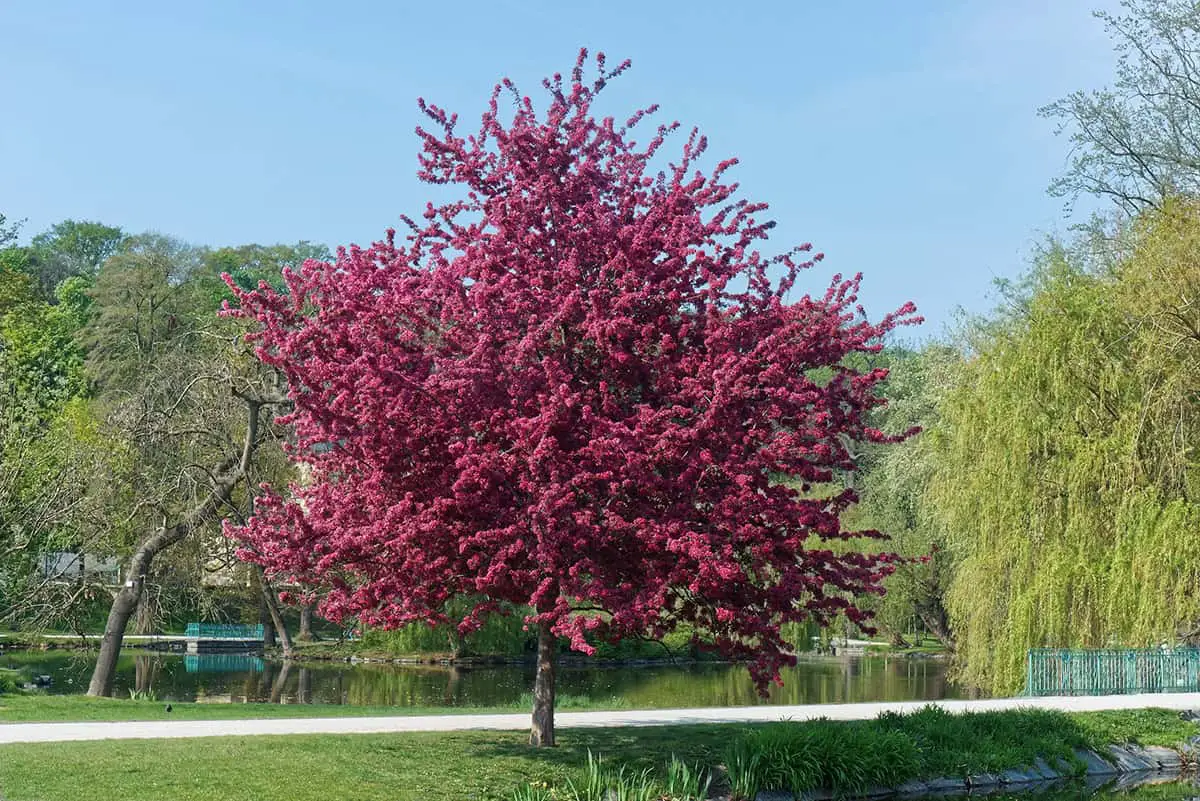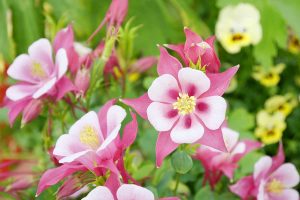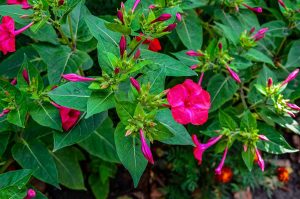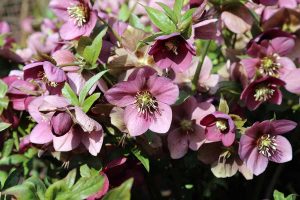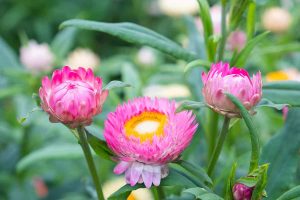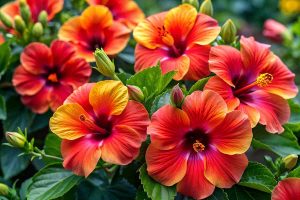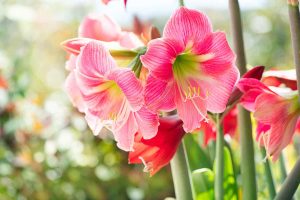After a long winter, you step outside and see your neighbor’s yard filled with vibrant, blossoming trees that signal the arrival of spring. You want that same burst of color in your yard. Discover which spring-blooming trees will best enhance your landscape, bringing beauty and joy to your outdoor space as the weather warms up.
Table of Contents
Japanese Flowering Apricot
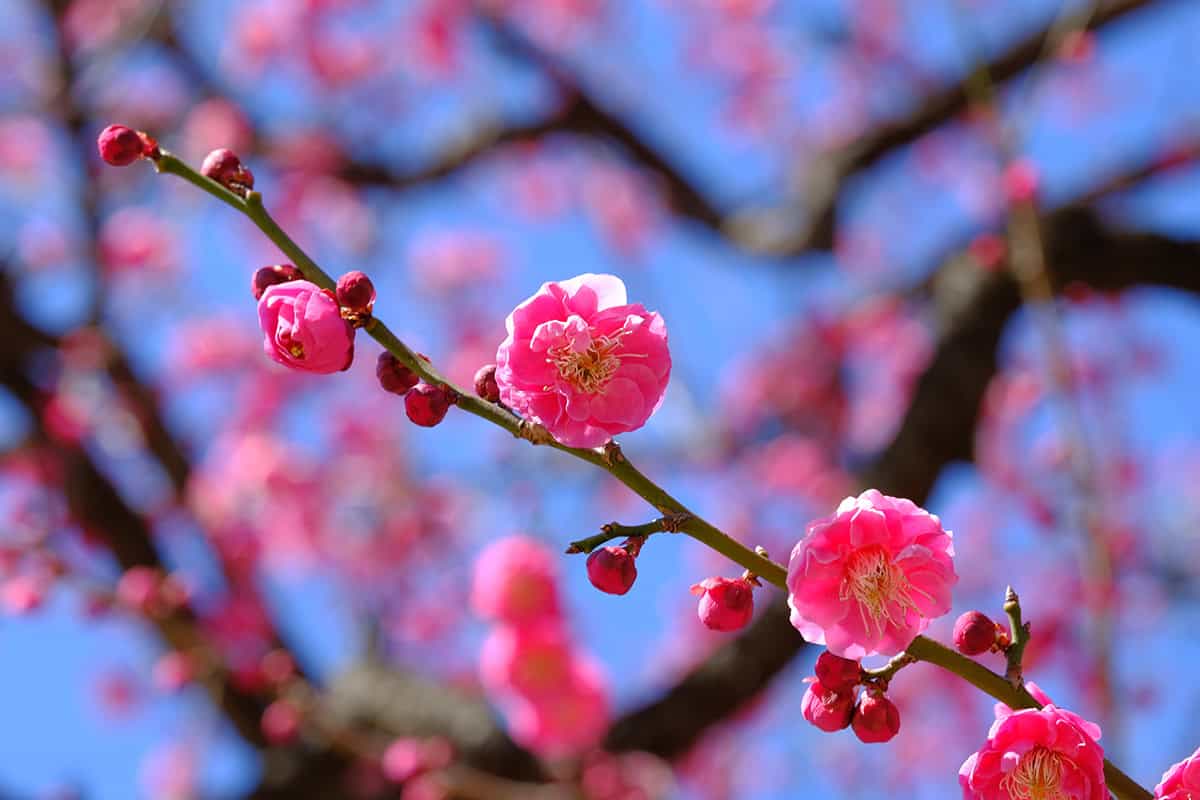
The Japanese Flowering Apricot is a herald of spring. You will see its vibrant blossoms emerge often while other trees remain dormant. This small to medium-sized tree offers a stunning floral display, which comes in a range of colors from white to pink and red. It typically reaches heights of 15 to 20 feet, with an equal spread, ideal for yards and gardens. Bloom time is from late winter to early spring.
Native to East Asia, it flourishes in well-drained soils and can adapt to various sun exposures. In the right conditions, you’ll find it can even grow up to 30 feet. Its fragrant flowers not only add beauty but sometimes arrive during winter’s chill, making it a valued specimen for landscapes.
Star Magnolia
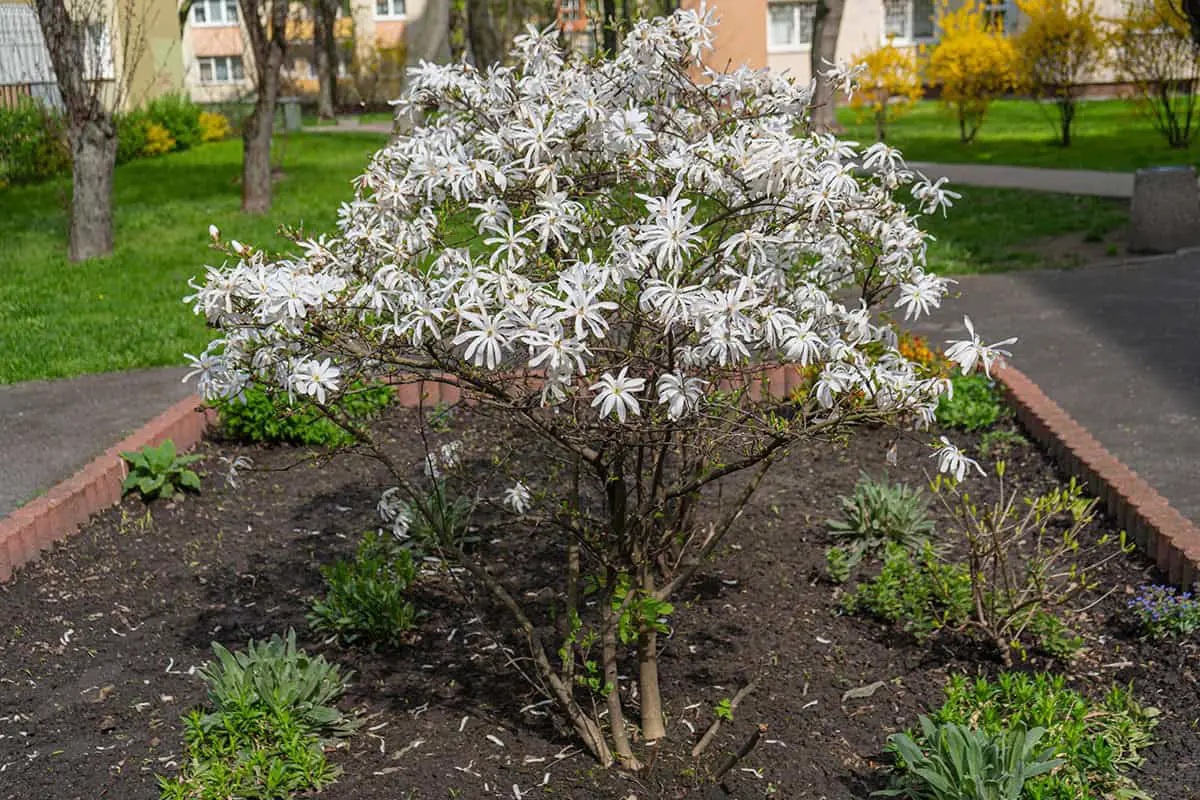
Star Magnolia is a tree known for its vibrant spring bloom. In early spring, you see an abundance of white, star-shaped flowers. As one of the first trees to flower, it signals the end of winter. Your garden gains a striking feature with its showy blossoms.
This variety remains relatively small. You can expect it to grow into a multi-stemmed shrub or small tree. It suits smaller spaces well. The rounded form enhances its visual appeal. Its compact size makes it a choice plant for residential landscapes.
The tree requires little pruning. You’ll find maintenance to be straightforward. In its native Japan, Star Magnolia is highly admired. It adapts well to various temperate climates. It contributes to local ecology by providing early-season nectar for pollinators.
The Star Magnolia prefers moist, well-drained soil and thrives in full sun to partial shade. It has moderate watering needs.
Their flowers are large and white, with a slight pink tint at the base. The foliage consists of dark green leaves that turn gold in the fall. The tree has a slow to moderate growth rate.
Eastern Redbud
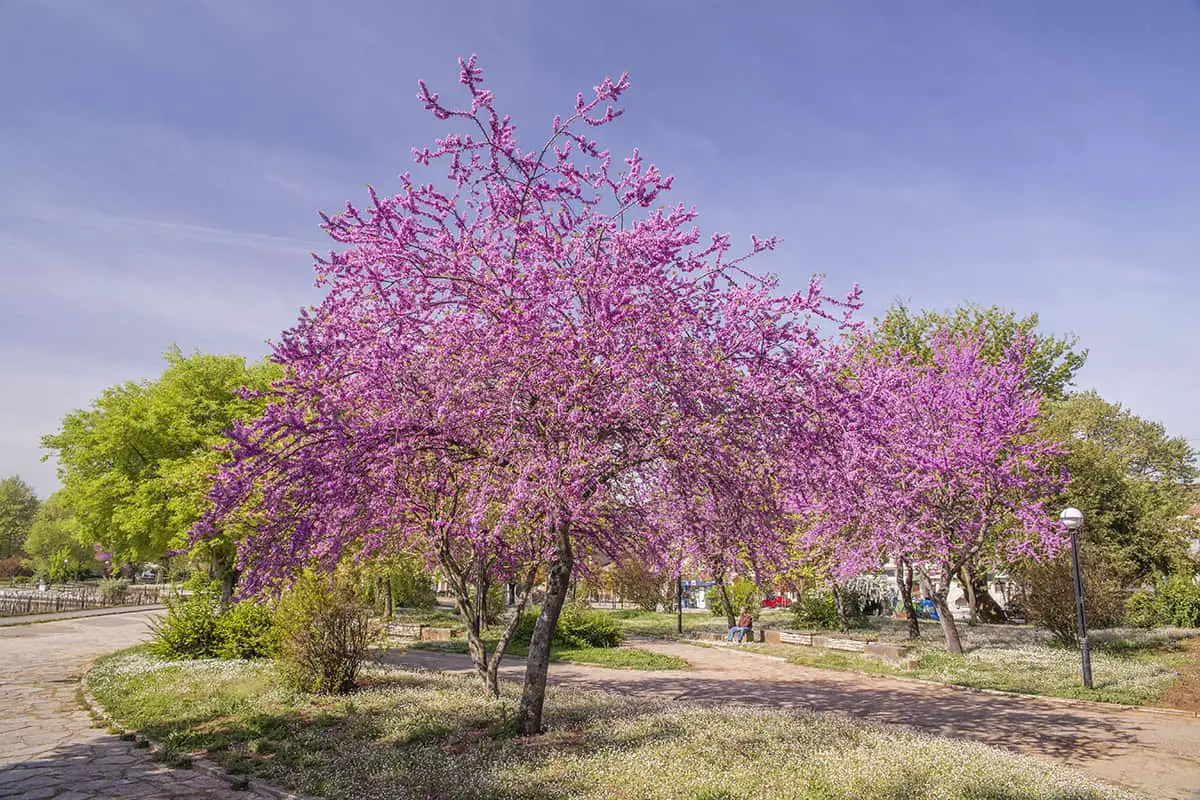
The Eastern Redbud tree blooms early in the spring. Your garden will showcase its vibrant pink flowers even before the foliage appears. With the scientific name Cercis canadensis, this species is native to eastern North America. It’s a popular choice for landscaping because of its manageable size and ornamental appeal.
Growing in a variety of soil conditions, the Eastern Redbud is versatile. It requires full sun to partial shade. You’ll find it thrives best in well-drained soils, although it can adapt to various environments. This adaptability makes it an excellent tree for different landscapes.
Flowers of the Eastern Redbud create a visual impact. They envelop the branches in shades of pink and purple, signaling the onset of spring. As the season progresses, these flowers give way to heart-shaped leaves, adding greenery throughout the summer.
Maintenance for this tree is minimal. Pruning helps maintain its shape and promotes a healthy growth structure. You should prune your Eastern Redbud after it finishes flowering to avoid cutting off any of next year’s buds.
Dogwood

When you think of spring, the dogwood tree often comes to mind. This tree is known for its beautiful flowers, adding a touch of elegance to your garden. During spring, you will see the dogwood tree bloom with flowers that range from white to pink. In summer, its foliage is lush and green, making it a delightful addition to your yard.
The dogwood prefers well-drained soil and a bit of shade. You can grow it as an understory tree, which means it does well beneath taller trees. It also thrives at woodland edges, where it can get just the right mix of sun and shade.
Caring for your dogwood tree involves regular watering, especially during dry periods. Pruning is essential to maintain its shape and remove any dead or diseased branches. In fall, the dogwood’s leaves turn to vibrant reds and purples before shedding. The tree even has a visual interest in winter, with textured bark and a striking form.
Lilac
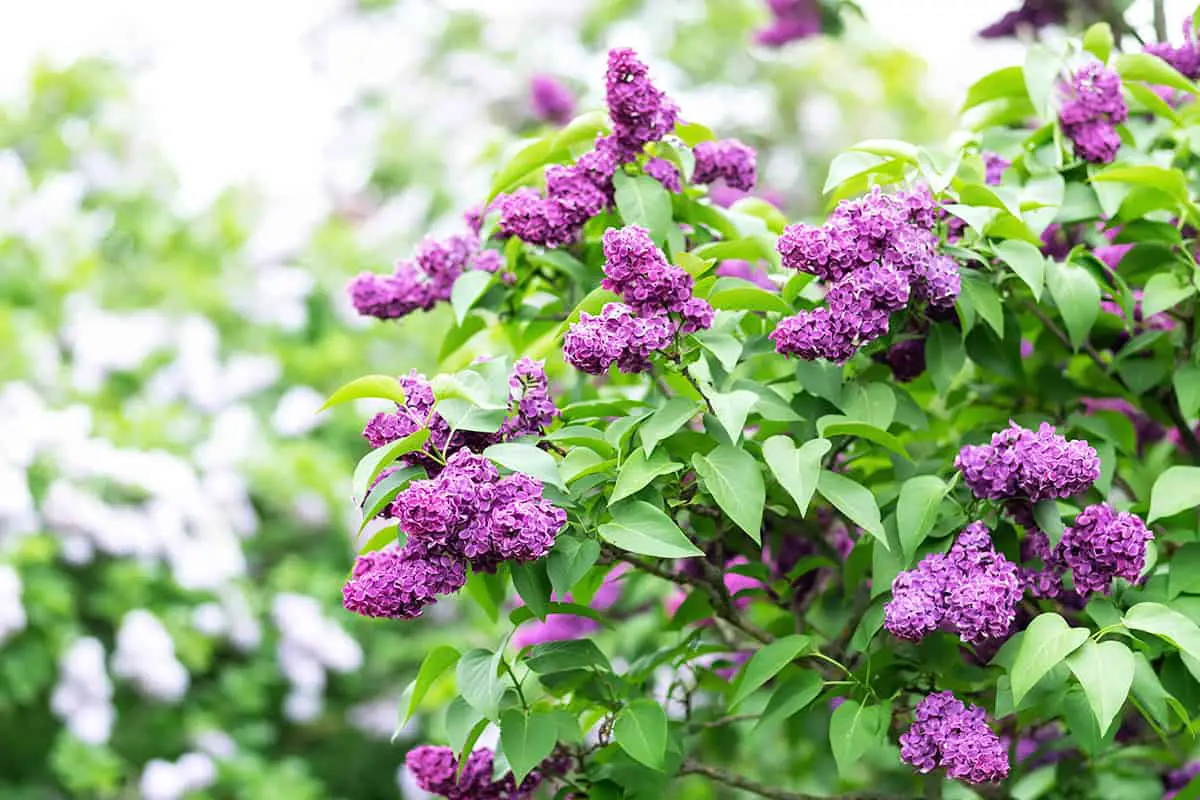
Spring brings the vibrant color and sweet scent of lilacs to your garden. These hardy shrubs serve as a classic choice for landscapes. Your choice of lilac can range from white to deep purple flowers, all known for their delightful fragrance. Lilacs thrive in well-drained soil, preferring sunny locations to foster abundant blooms.
Lilacs bloom in spring after setting their buds in the previous fall. If you see lilacs blooming during autumn, this is unusual. To encourage health and growth, prune your lilacs right after their flowers fade. This timing allows for healthy buds to form for the next season.
For your lilacs to flourish, remember their preference for full sun. Inadequate sunlight may limit blooming. Regular pruning keeps these shrubs at their best. It stimulates regrowth, ensuring a lush display for years to come.
Selecting a lilac for your landscape means planning for the long term. These shrubs can live for decades, offering springtime beauty and fragrance. Each year, they require minimal care: a bit of fertilizer, occasional shaping, and careful watering.
Crabapple
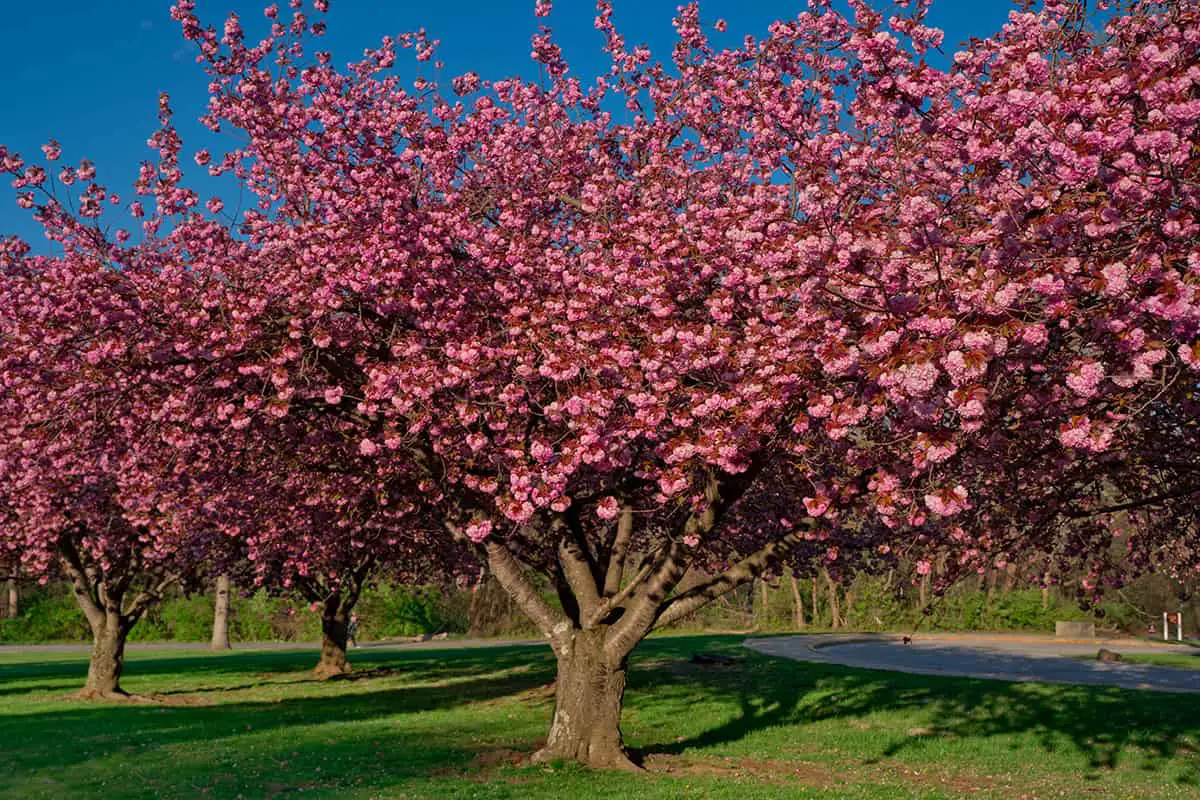
Crabapple trees are known for their spring blossoms. These trees brighten landscapes from late April to early June. Different varieties bloom at various times. You’ll see blossoms in shades of white, pink, and red.
The varieties differ in size, shape, and color of fruit. Some crabapples grow no taller than 20 feet. The blossoms of crabapple trees signal spring’s arrival in the Front Range.
Crabapple trees suit medium-sized spaces. They require full sun to partial shade. Selecting the right crabapple variety enhances your garden’s aesthetic appeal.
Flowering Plum
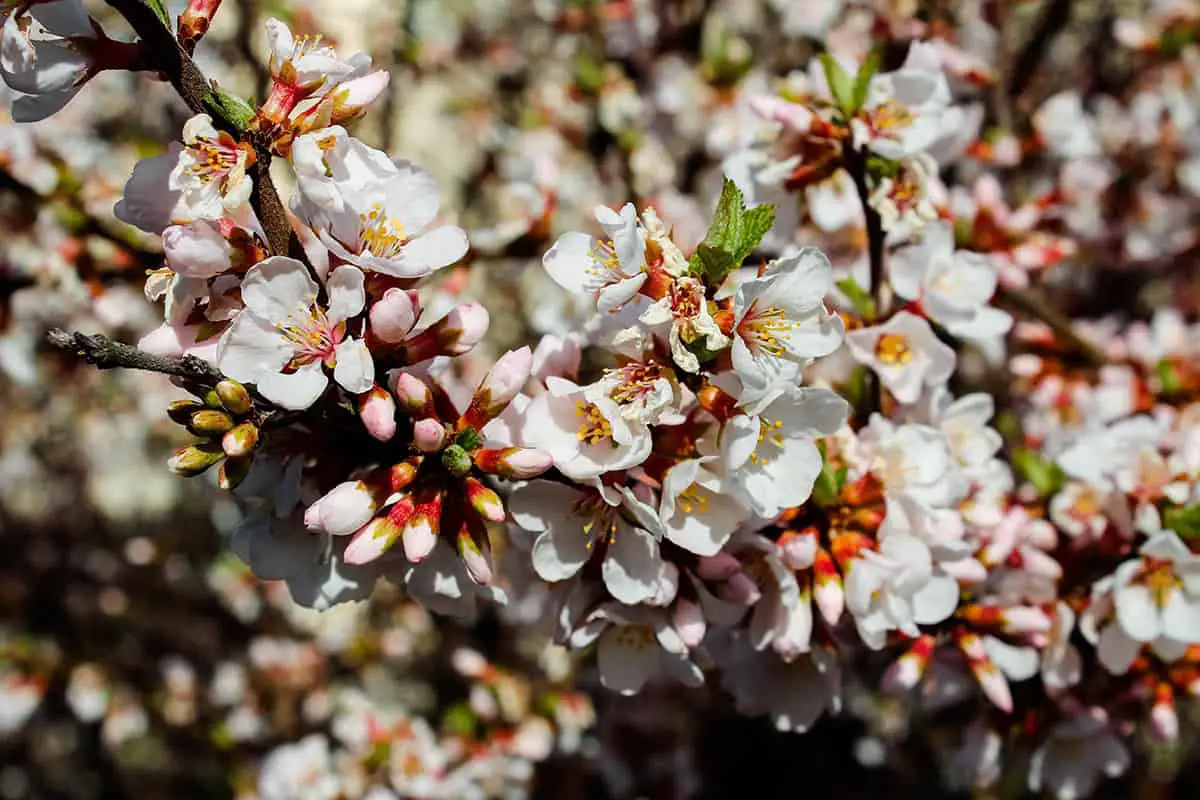
Flowering plum trees signal the arrival of spring with their vibrant blooms. As the season unfolds, you witness small, fragrant flowers gracing these trees. They come in various shades from pale pink to white. Their flowering marks one of the earliest signs of spring.
Expect to see a rounded silhouette with a similar width to its height, as a mature flowering plum typically stands 15-20 feet tall. Leaves emerge in the spring, accompanying the blossoms. These leaves are either oval or elliptic and consistently green.
Landscaping enthusiasts appreciate the visual appeal these trees add to gardens. Varieties such as the ‘Thundercloud’ are particularly popular for their notable twiggy appearance and colorful foliage. Flowering plums are more than just ornamental; some types yield fruit that local wildlife find attractive.
Snowy Mespilus
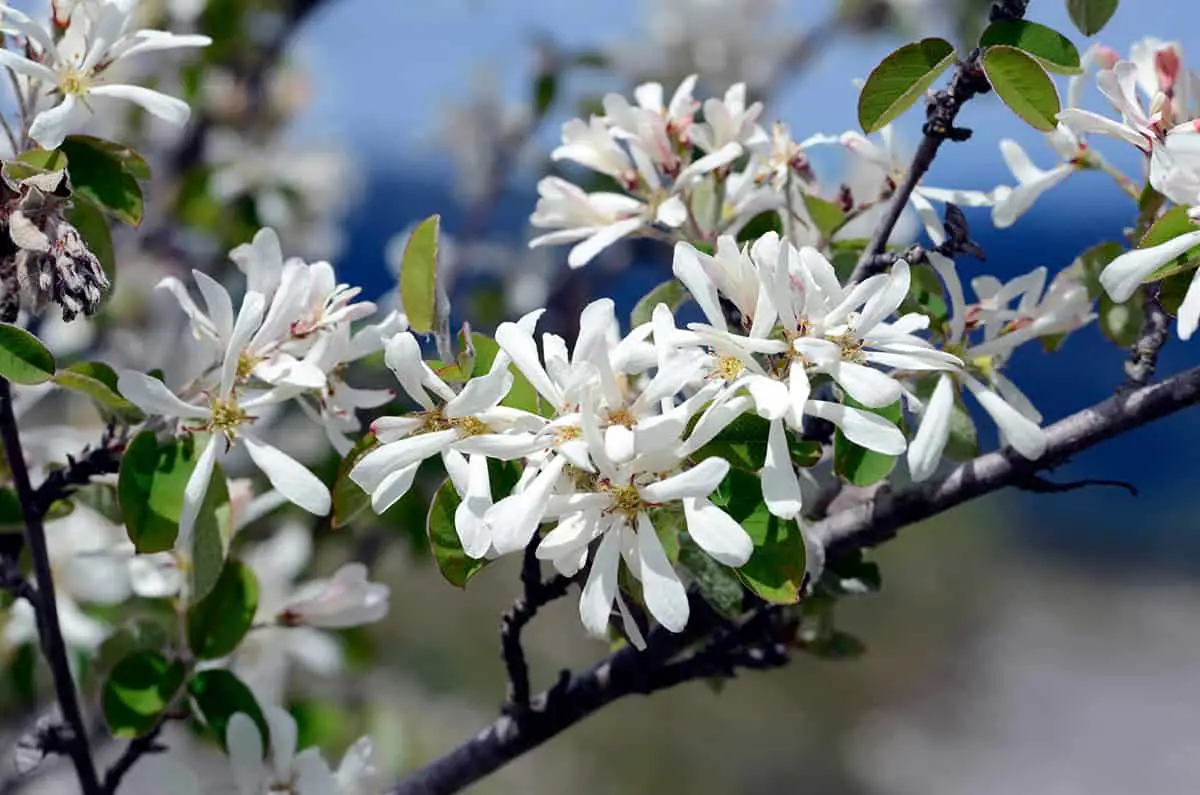
The Snowy Mespilus is a small tree you can recognize by its white blossoms. In spring, it adds charm to any landscape. It typically reaches a height of around 9 feet. This ornamental tree is appreciated for its natural beauty and size that fits well in smaller yards.
Your Snowy Mespilus will display flowers that are not noted for their fruit production but for ornamental value. The blooms appear during spring, adding subtle elegance to your garden. Come spring, the snowy blanket of flowers contrasts beautifully against emerging dark green foliage.
The care for a Snowy Mespilus is minimal once established. They’re suited for a range of conditions but prefer well-drained soil. They handle cold temperatures well, making them a versatile choice for many locations. Pruning is seldom necessary, which helps maintain their natural, pleasing shape.
When the Snowy Mespilus finishes its bloom period, it still provides visual interest. The leaves turn from green to shades of orange and red, adding autumnal appeal.
Hawthorn
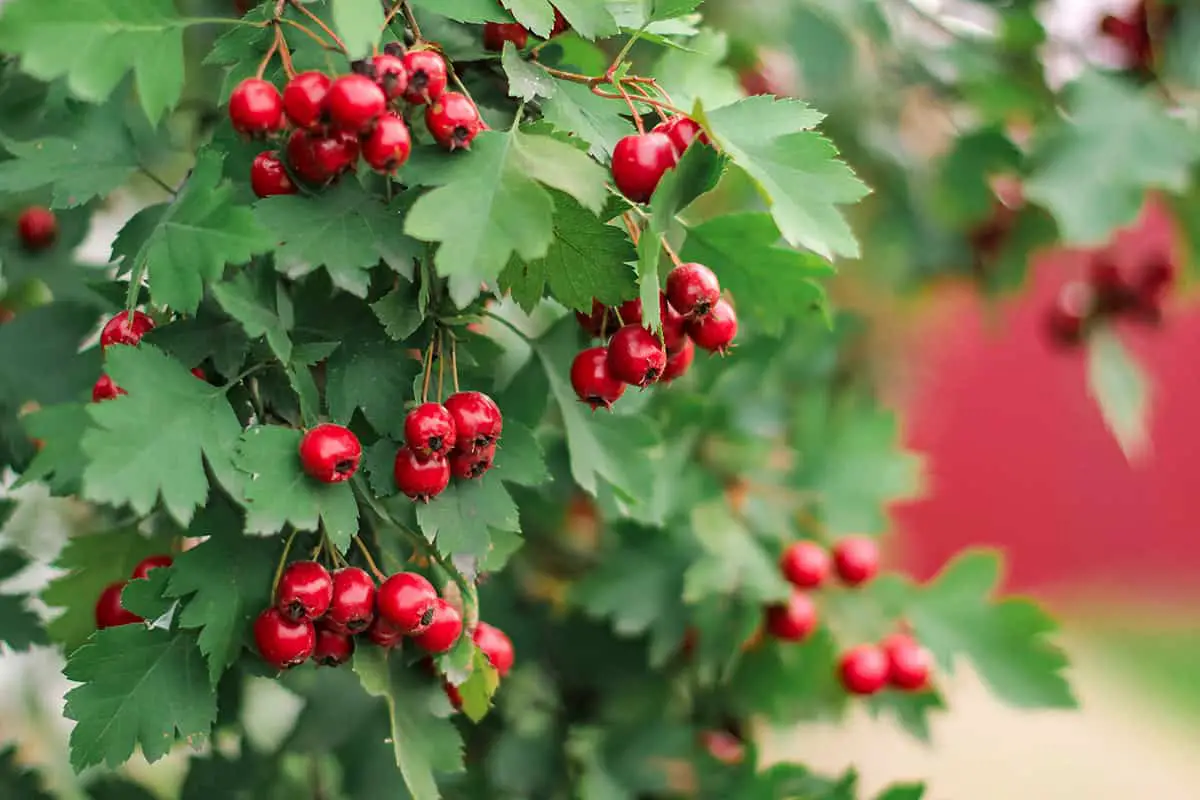
Hawthorn trees signal the start of spring with their blossoming flowers. If you appreciate ornamental trees, hawthorns are a notable choice for your garden. They are known for the abundance of white or sometimes pink flowers they produce. The Crataegus genus, to which hawthorns belong, includes a multitude of species, often with varied features.
You can identify hawthorns by their small size, generally growing between 20 and 30 feet tall. Each species may have unique characteristics, but they often share flowering habits and leaf types. The spring blooms aren’t the only attractive features of hawthorns; in the fall, they bear bright red fruits and boast colorful foliage.
Due to their size and the fact they can adapt to a variety of soil conditions, hawthorns suit urban landscapes well. They can tolerate urban pollution and are thus useful in city environments. Additionally, many hawthorns have long, straight thorns, and some species, notably the Washington hawthorn, are commended for their pleasing appearance.
It’s important to note, that despite their beauty, hawthorns can sometimes be hard to differentiate. Various species may crossbreed, making them difficult to identify.
Forsythia

Forsythia blooms signal the arrival of spring. These bright yellow flowers burst forth early in the season, often before the leaves unfurl. You’ll appreciate forsythia’s vibrancy when your garden still slumbers in the vestiges of winter.
These shrubs flourish under full sun but can also tolerate partial shade. Your forsythia will grow best in well-drained soil, offering a low-maintenance splash of color. They are hardy, with a notable tolerance for urban pollution, making them ideal for city and suburban gardens alike.
Pruning is essential for maintaining a tidy growth habit. Trim your forsythia shrubs just after they finish flowering. This timing allows for the healthiest growth and ensures a full display of blooms the following spring.
Forsythia branches also make excellent choices for indoor arrangements. You can cut stems just before they bloom and watch them open indoors, adding a bright note to your home.
In your landscape, forsythia plays well with other spring bloomers. Pair them with tulips and daffodils for a classic spring tableau.
Tulip Tree
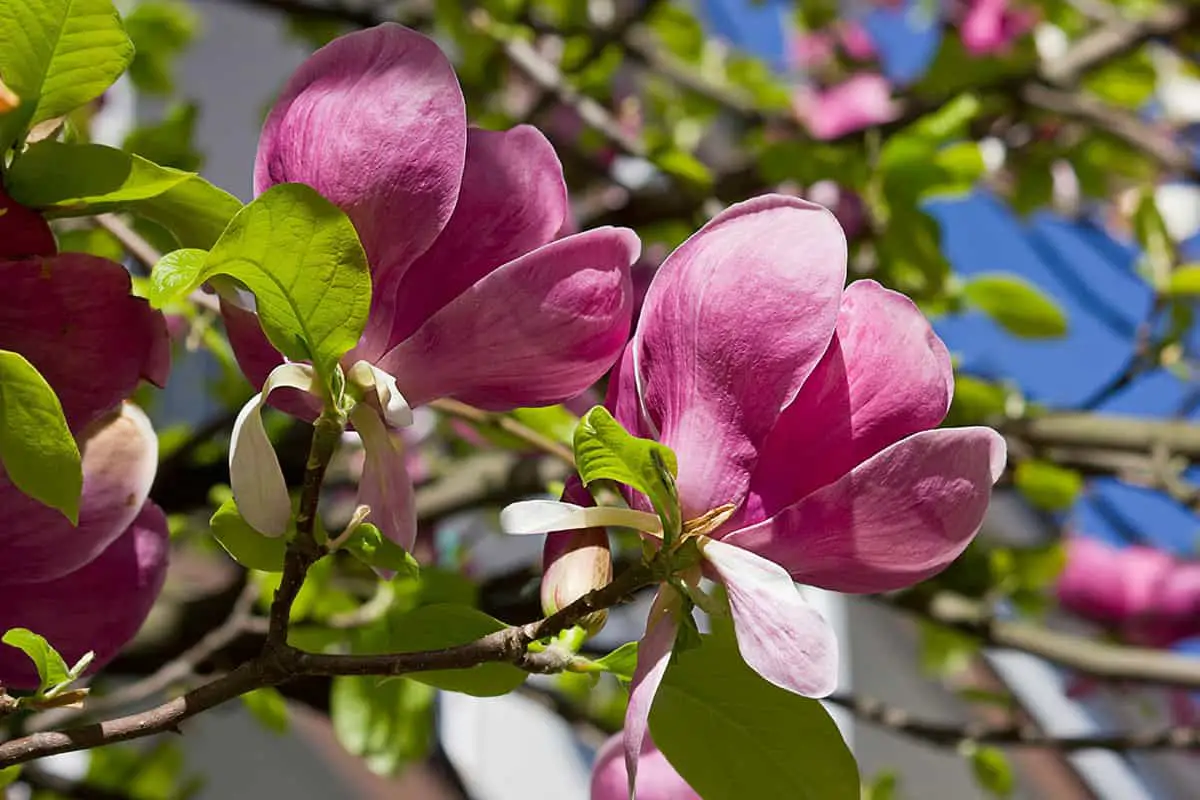
The Tulip Tree, known botanically as Liriodendron tulipifera, blooms in spring. You can identify it by its distinctive greenish-yellow flowers with an orange corolla. It belongs to the magnolia family.
Your garden will brighten from April to June when the tree flowers. The tulip tree grows tall and produces showy blossoms, resembling tulips. Its flowers reach an impressive size of 2.5 inches.
The leaves of this tree are unique. They feature a four-lobed shape and turn golden yellow in fall. These leaves complement the flowers.
Following the blooming period, the tree develops fruit. These fruits appear as dry, scaly, oblong cones. They mature and release seeds in the fall.
Caring for your tulip tree involves providing it with enough space to grow. It can reach over 100 feet in height. The tree thrives in well-drained, moist soil.
Pear Tree
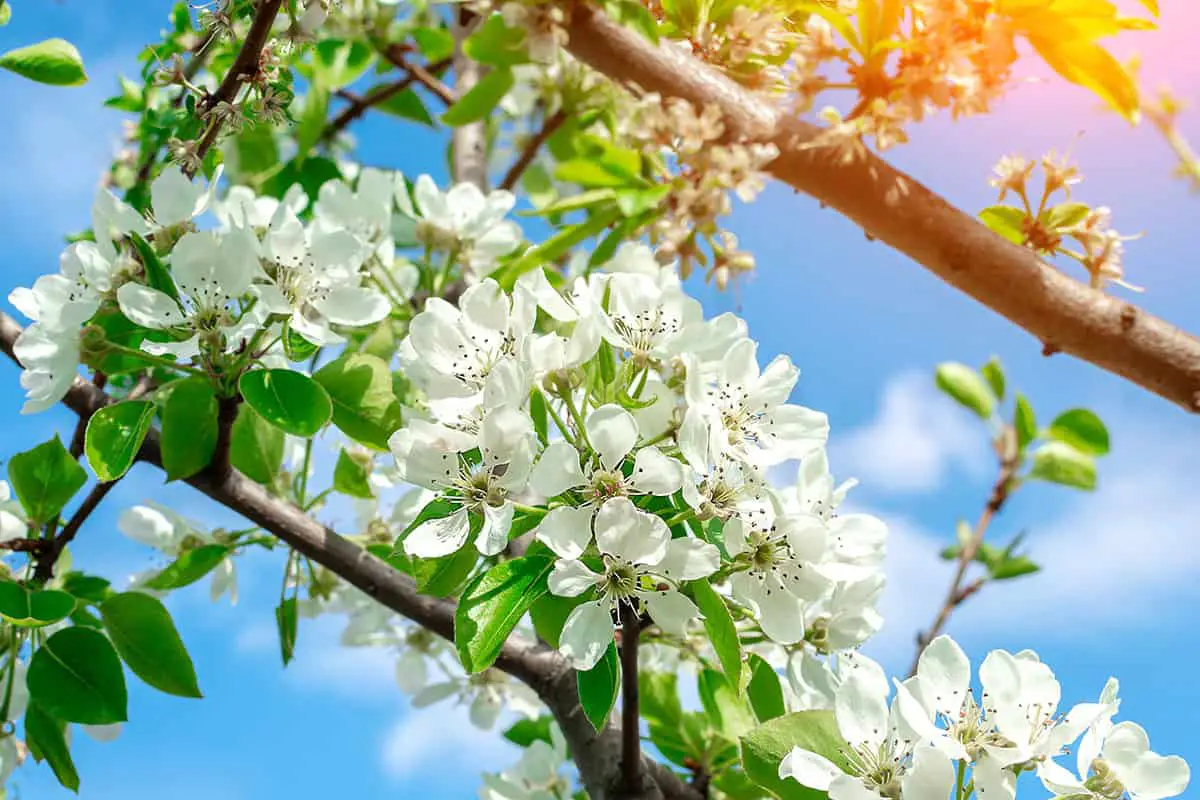
When spring arrives, your landscape can be transformed with the blossoming of pear trees. These trees are known for their enchanting white flowers. You will find that the pear tree’s showy blooms are among the first to usher in the season, creating a stunning floral display.
After the flowering period, pear trees will produce fruit, which typically ripens by late summer to fall. Your tree will need proper sunlight and well-drained soil to thrive. They are adaptable to a range of soil types, provided you ensure adequate moisture and avoid waterlogged conditions.
You should be aware of the differences between fruiting pear trees and ornamental varieties. Ornamental pear trees, like the Callery pear, have been popular for landscaping but are now recognized for their invasive tendencies in some regions. You might opt for alternatives suggested for flowering trees that can be less problematic ecologically.
Proper care for your pear tree includes regular pruning. This helps maintain its shape and promotes healthy growth. Treating cuts immediately with herbicide is important if you decide to remove the tree. This prevents unwanted sprouting and controls its spread, especially for types known to be invasive.
Flowering Almond
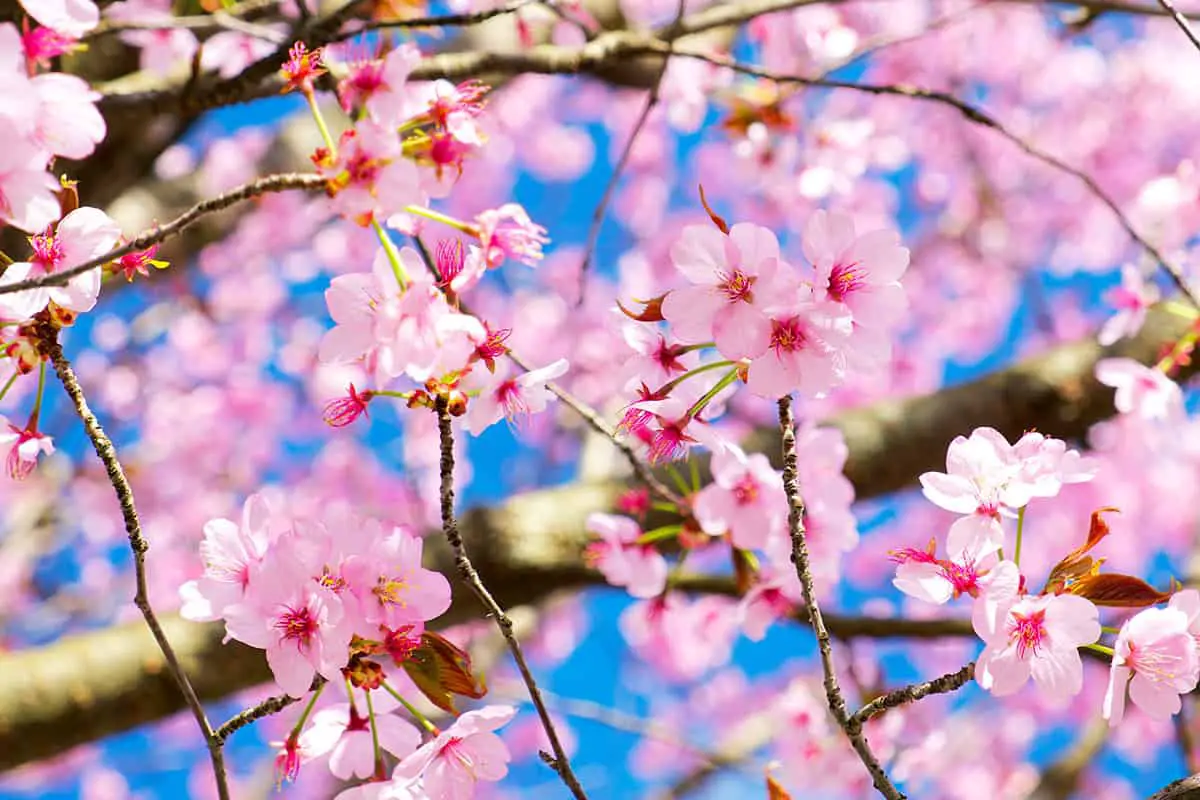
Flowering Almond trees bloom in spring. You will notice their striking pink flowers, as they are one of the first to blossom. The almond’s botanical name is Prunus triloba. They sometimes grow as small trees.
Your garden gets a vibrant touch from the Flowering Almond. The shrub reaches up to 15 feet. The blooms appear before the leaves.
Caring for these trees is not demanding. When you plant them, choose a sunny spot. Water them well, but avoid wetting the foliage. This shrub also benefits from proper fertilization.
Pruning helps maintain the shape and health of Flowering Almond trees. Prune after the flowers fade. It prevents disease and encourages next year’s blooms.
The Flowering Almond is a lesser-known dwarf variety. It fits well in smaller spaces. And it offers the same spectacular floral display. This variety is compact and perfect for tight garden spaces.
Golden Chain Tree
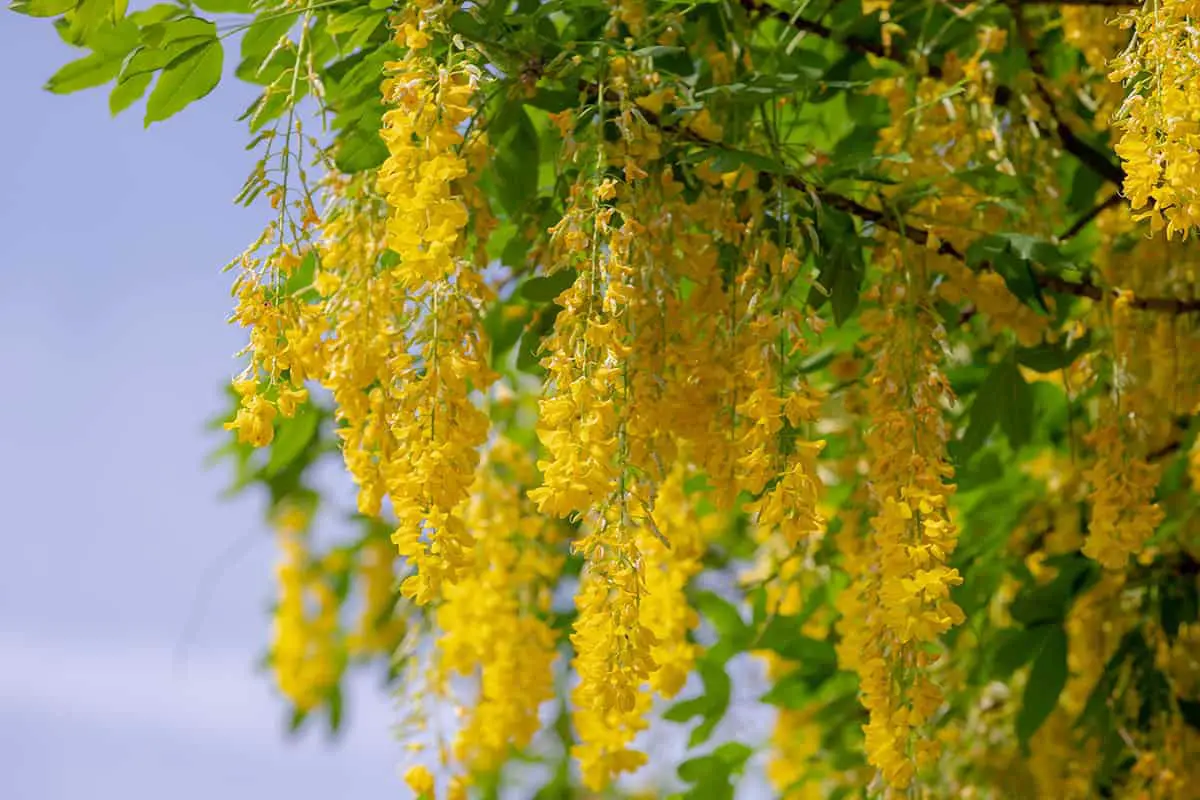
The Golden Chain Tree captures your attention during spring. When in bloom, it displays vibrant, yellow flowers. These blooms are pea-like and hang in clusters, resembling golden rain.
You recognize this tree by its striking appearance. It grows to about 20 to 25 feet tall and hosts rich wisteria-like flowers. The pendulous racemes can reach lengths up to 10 inches, emitting a sweet fragrance.
Your Golden Chain Tree will thrive in USDA Hardiness Zones 5 to 7. It prefers full sun but will tolerate partial shade. Plant it in well-drained soil for the best growth. It’s ideal for adding a pop of color to your garden in the spring.
Pruning right after flowering helps maintain its shape. However, keep an eye out for the pods that the tree sheds, as they can become quite messy. When the flowering season ends, the tree’s pendulous pods add an interesting texture to the winter landscape.
Remember, all parts of the Golden Chain Tree are toxic if ingested. Handle it with care and ensure it’s planted away from pets and children’s play areas.
Wisteria

Spring unveils the charm of wisteria trees with their cascading flowers. Wisteria exemplifies the beauty of the season. This climbing vine can enhance your garden with its long, fragrant blooms. They typically flower in mid-spring.
Given proper support, wisteria can reach 10 to 25 feet in length. It’s a cold-hardy plant that thrives even after chilly winters. When it blooms, vibrant purple flowers drape over structures and trees.
Proper care yields a robust wisteria display. It requires full sun exposure and regular pruning to manage growth and encourage blooming. Beware, though; it can become invasive without maintenance.
To revel in Wisteria’s splendor, plant it where it can climb. Pergolas, trellises, and fences make excellent supports.
Japanese Snowbell
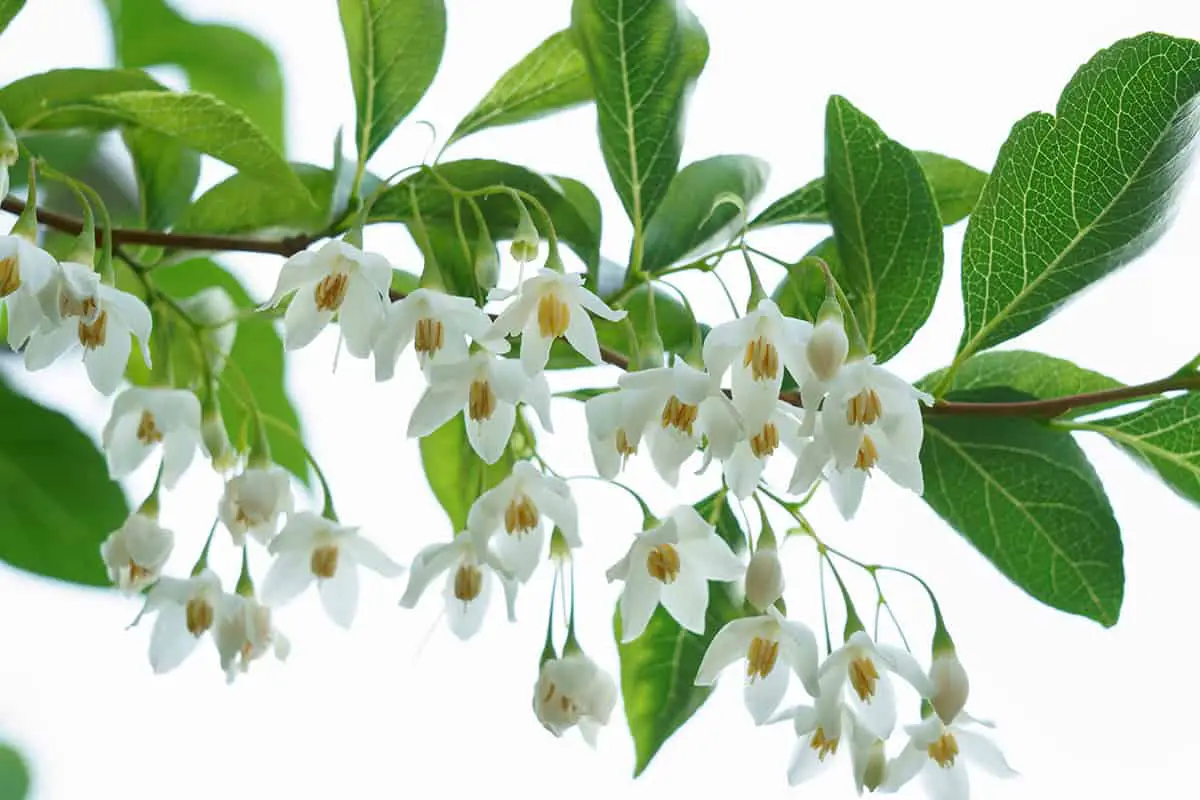
The Japanese Snowbell is a charming tree known for its decorative qualities. In late spring, its branches are adorned with white, bell-shaped flowers. These persist into early summer, providing extended seasonal interest in your garden.
Your landscape benefits from the Japanese Snowbell’s moderate size. It typically grows to about 20 to 30 feet in height. Its spread matches its height, making it an ideal choice for residential gardens.
The leaves of this tree present a bright green backdrop that complements the fragrant blossoms. During the fall, the foliage turns yellow, adding another layer of visual appeal.
Care for the Japanese Snowbell is straightforward. It prefers well-drained soil and full sun to partial shade. Maintain its health with regular watering during dry spells and mulch to preserve soil moisture.
Weeping Cherry
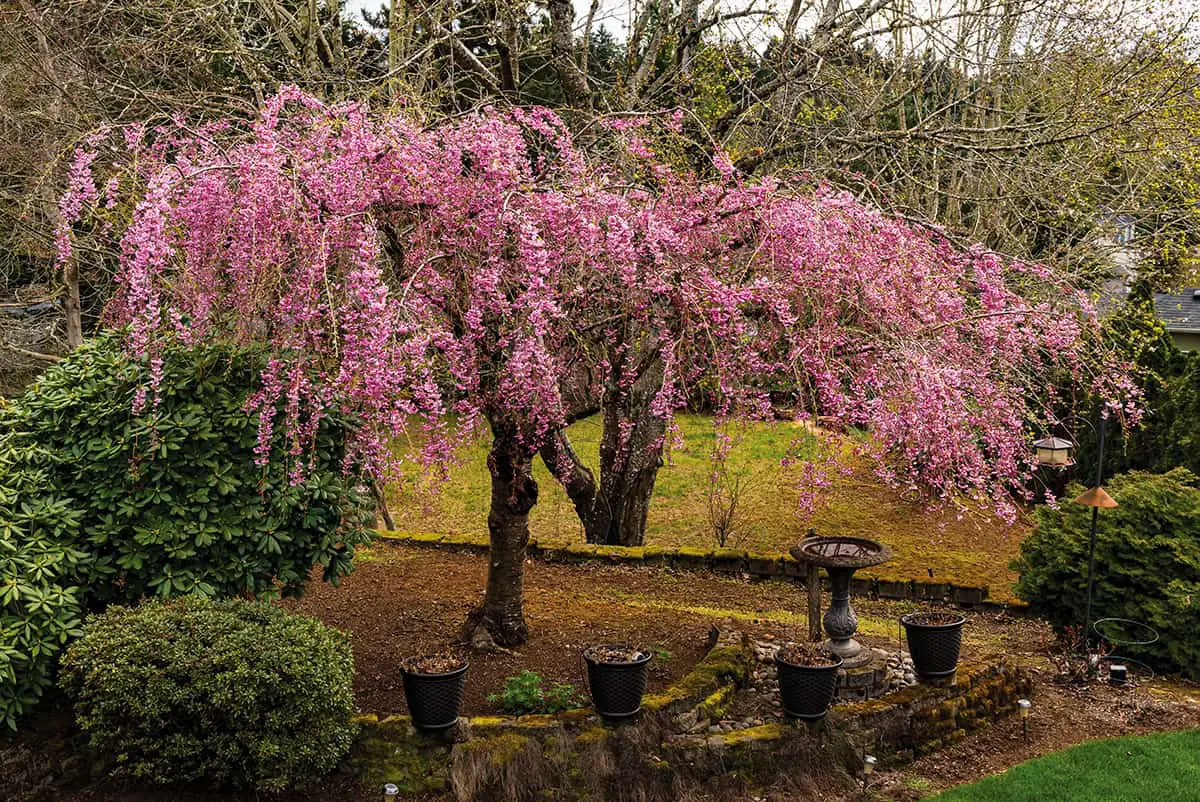
The Weeping Cherry is a spring-blooming tree that you’ll love for your garden. Each year pink flowers bloom, adding a splash of color. This tree has a dramatic weeping habit, where branches cascade towards the ground.
The Weeping Higan Cherry’s scientific name is Prunus subhirtella ‘Pendula’. It thrives in full sunlight and requires well-drained soil to reach its full potential.
You can expect your Weeping Cherry to grow 20 to 30 feet tall. The tree’s spread typically ranges from 15 to 25 feet. The leaves stay glossy green through summer and well into fall. They create a striking contrast with the bark.
For a Weeping Cherry, plant it in a spacious area. It will need room for the branches to gracefully sweep down. Regular pruning will maintain its shape and health.
Ornamental Pear
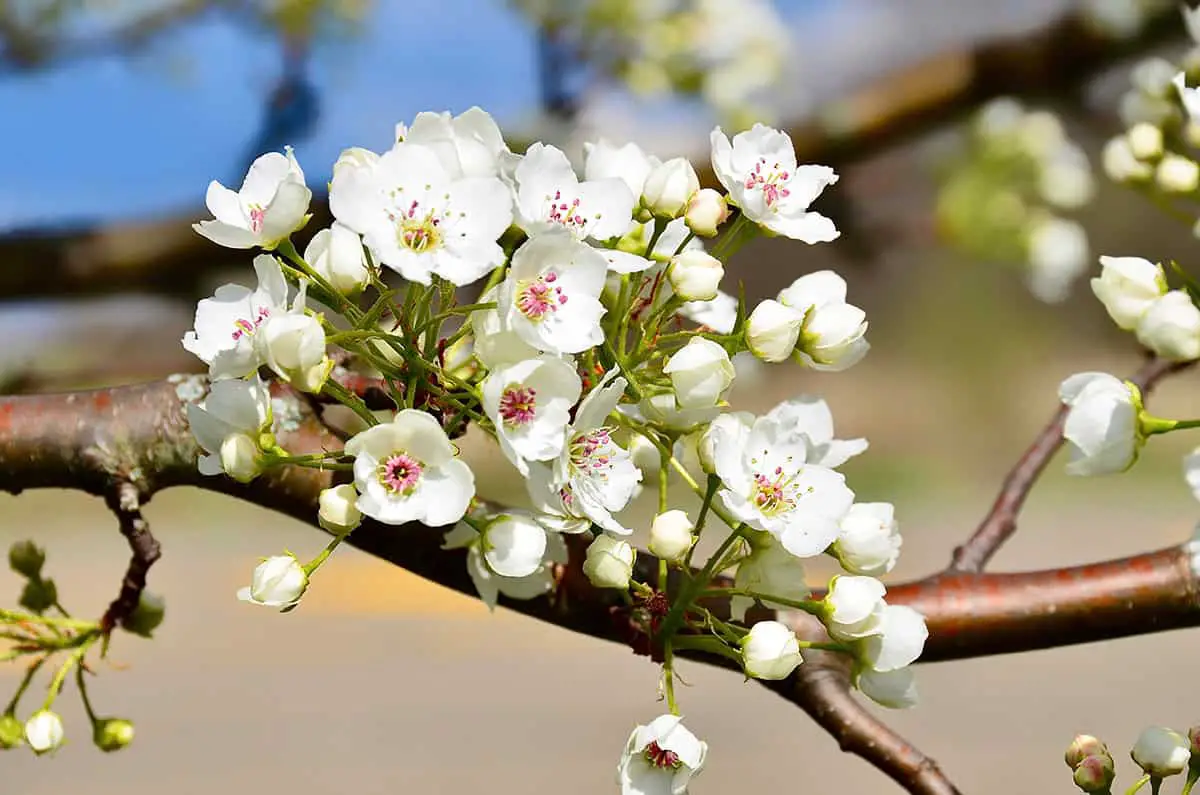
Ornamental pear trees signal the start of spring with their bountiful white flowers. You’ll recognize them by their vibrant blossoms as one of the season’s earliest flowering trees. These trees are not just valued for their aesthetic appeal but also for their adaptability in urban environments.
These trees adapt to a range of climates and flourish in various US regions.
Clusters of white flowers decorate the branches in early spring. The fragrance of the blossoms is strong and distinct.
Ornamental pear trees produce small fruits that attract wildlife. Their leaves turn bright shades of red and purple in fall.
For more detailed information on these resilient floral harbingers, consider visiting about flowering pears or learning about the history of the Bradford pear.
